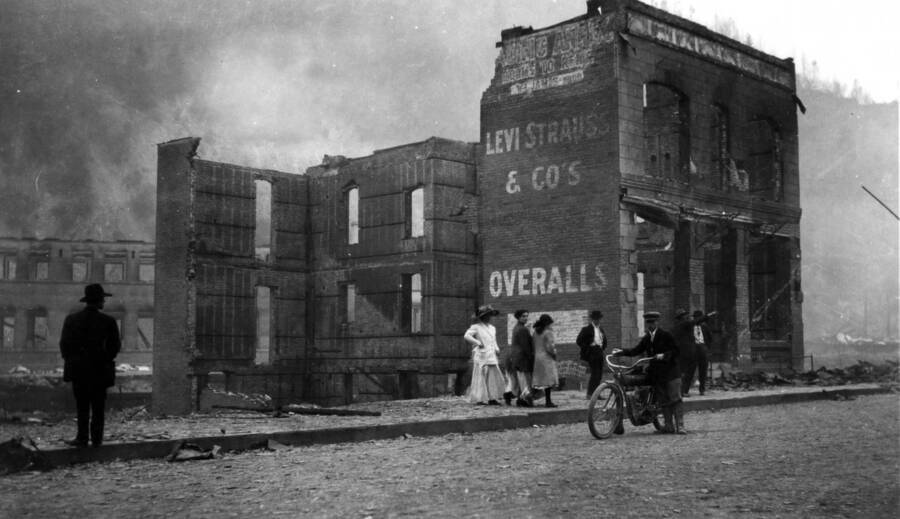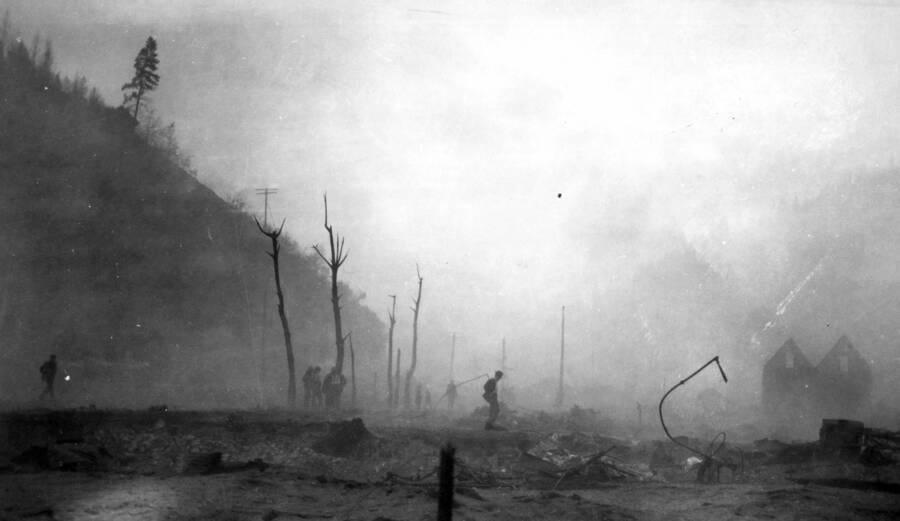The Big Burn Collection
An exhibition of materials related to the 'Big Burn' fires of 1910
Contents: About the Fires | About the Collection | Tech
About the Fires
The spring of 1910 was ominously dry throughout Idaho, Washington, and Montana. In the Coeur d’Alene National Forest alone, U.S. Forest Service officials had been battling fires since early April. In July, a rainless electrical storm ignited even more blazes across the Northern Rockies. Bad as it was, conditions got worse.
On August 20, a “Palouser” wind whipped through the forests, creating an inferno now known as the Big Burn. The fires took the lives of nearly 90 people, leveled entire communities, burned almost 3 million acres of timber, and set US Forest Service fire policy for the next 6 decades.
About the Collection
These materials come from the University of Idaho Library’s Special Collections and Archives department. Most of the photographs are from the Barnard-Stockbridge Photograph Collection and the A.B. Curtis Dworshak Dam Collection. The telegraphs and correspondence come from the Bunker Hill Mining Collection.
Also included are a first-person history of the 1910 fires, written by Elers Koch, and a two-part recording (Part 1, Part 2) plus Transcript of an interview with Ione “Pinkie” Adair, who witnessed the fire firsthand. Timothy Egan used these histories, photographs, and other materials from the Library’s Special Collections & Archives department during the composition of The Big Burn, as he notes in the acknowledgements section towards the end of his book.
For additional photos and information on the fires of 1910, see this special series from the Spokesman Review.
Technical Credits - CollectionBuilder
This digital collection is built with CollectionBuilder, an open source framework for creating digital collection and exhibit websites that is developed by faculty librarians at the University of Idaho Library following the Lib-Static methodology.
Using the CollectionBuilder-CSV template and the static website generator Jekyll, this project creates an engaging interface to explore driven by metadata.


